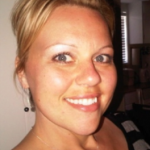Between the Lines of Stand Up 2 CancerBetween the Lines of Stand Up 2 Cancer
October 16, 2014
By: Mike Craycraft
I have been watching Stand Up 2 Cancer since the original event in 2008 and each year chills come to my skin and tears to my eyes. The event is amazing given the celebrities that participate and the fact that it is broadcast uninterrupted on all of the major networks. However, more amazing is the money they have raised and most importantly the impact and work they are supporting with those funds.
While watching this year four things came to mind that should generate questions and I wanted to address those questions.
What is the Role of Obesity in Cancer?
The opening scene started with Melissa McCarthy comically running with a torch and a joke that she just completed 29 miles. Melissa handed off the torch to Steve Carell, who decided to take the escalator instead of running up the red carpet steps. Steve tossed the torch to Eric Stonestreet with Eric saying, “I don’t want to get sweaty.” I applaud all three celebrities for providing an entertaining opening but it got me thinking about exercise and the role of obesity in cancer.
According to the National Cancer Institute it was estimated that in 2007 obesity was the cause of cancer in 34,000 men and 50,500 women. This means that an estimated 4 percent of male cancers and 7 percent of female cancers are being caused just because of obesity. Obesity is linked to increased risks of eight cancers and is most likely involved with more. I won’t get into relationship between exercise and obesity or exercise and cancer but I think the stats on obesity causing cancer are shocking and need to be addressed.
Why has Government Funding for Cancer Research Diminished?
At the beginning of the program, talking about the need and impact of Stand Up 2 Cancer, Robert Downey Jr. stated, “So much government funding for cancer research has diminished.” But, why? In September 2008, the Obama-Biden Plan to Combat Cancer promised to double funding for cancer research within 5 years, with focus on the National Institutes of Health (NIH) and the National Cancer Institute (NCI). However, the NIH reports that funding of cancer research since 2008 has decreased. So where did all of these promised funds go? I have no answer to this question but perhaps the politicians may know, so why not ask them?
How Common is Adolescent and Young Adult Cancer?
Stand Up 2 Cancer featured a lot of stories about cancer survivors and how cancer research contributed to their survival. Most of these patients were either pediatric patients or older adults. Where were the adolescents and young adult (AYA) cancer patients age 15-39? There are six times more AYA cancer cases, affecting 15 to 39-year-olds, than pediatric cancer cases, affecting 0 to 14-year-olds. I don’t think SU2C purposefully left out AYA patients. To be honest, perhaps there would even be justification to leave AYAs out. Cancer survival rates for AYAs have basically remained the same for decades. One of the reasons is thought to be a lack of participation and access to clinical trials that have been so valuable to pediatric and older adult cancer fighters. Raising awareness of AYAs and clinical trials is beyond the scope of SU2C but it does need to be brought more out into the open.
Will Crushing Cancer’s Testicle Kill It?
I applaud Ron Burgundy for making an appearance, entertaining us and declaring his distaste for cancer by announcing, “Lets grab one of cancer’s testicles and pop it like a plump water balloon on a hot summer day.” I just thought I would help educate Ron in that crushing testicles will not kill cancer or anyone for that matter. All of my testicular cancer survivor brothers are proof that one can live a long, healthy and active life without one, or two, testicles.
Once again, Stand Up 2 Cancer was amazing and I hope it was a huge success to raise funds for all of their programs to help cancer fighters live longer lives. The show had one purpose and that was to raise money and not to address other issues in the cancer continuum. The questions raised in my mind while watching the show were just from me reading between the lines.
This entry was originally posted on The Huffington Post. Learn more about Mike here: https://www.huffingtonpost.com/mike-craycraft/ or follow him on Twitter: www.twitter.com/pharmacistmike



